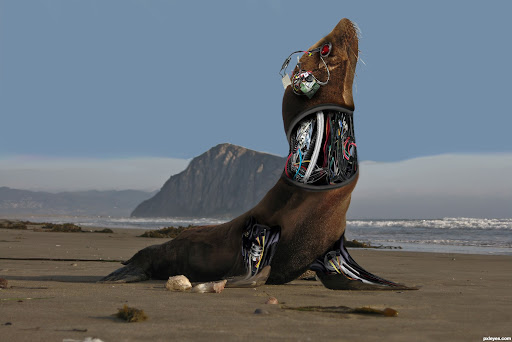By: Isabella Liu
Researchers from the South Australian Research and Development Institute (Aquatic Sciences) and the University of Adelaide attached cameras to four sea lions named Daphne, Phoebe, Iris and Pasithea to dive in the remote, aquatic ecosystems around Kangaroo Island and Olive Island on Monday, August 7th,2024 . Sea lions regularly dive 300 feet while hunting, which is why it is much easier to get footage of the sea.
Researching seabed habitats is no easy task for humans. Scientists have to use costly and expensive equipment such as remotely operated vehicles and cameras towed by underwater vessels to map parts of the seafloor. Additionally, using those tools can be difficult and challenging and can only be accomplished under certain weather conditions. Meanwhile, sea lions are well-adapted to exploring the seafloor. They cover more ground more quickly than ROVs and are less affected by bad weather. Furthermore, outfitting the predators with tiny cameras is more cost-effective than building and operating a full vehicle from scratch.
Nathan Angelakis, a PhD at the University of Adelaide, and his team approached the sea lions on land and glued synthetic material to their backs and heads and then attached small cameras and devices to track both speed and location. When the sea lions awoke, they made their way to the water. After four days, they returned to their pups on the shore, and the team removed the devices. The patches remained to be shed as the sea lions naturally shed their fur. The footage they discovered was incredible. After the scientists studied the recordings, they found six types of seabed habitats: sponge/sand, bare sand, macroalgae reef, macroalgae meadow, invertebrate reefs, and invertebrate boulders. This new information, combined with years of oceanographic data, allowed the researchers to predict which habitats can be found across Southern Australia’s continental shelf.
According to The New York Times, aside from mapping unexplored areas, video data by animals makes studying habitats for endangered species easier. Marine populations have decreased by more than 60 percent in the past forty years. Scientists can use this research method to gain more information about an endangered animal’s habitat while learning about other animals.











